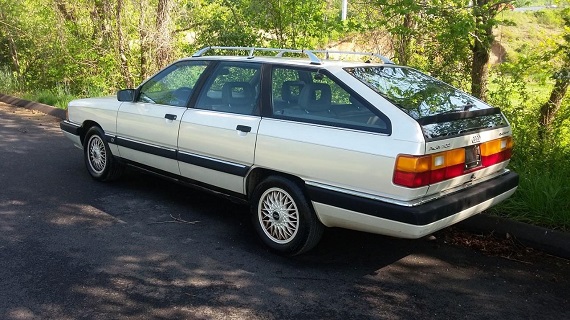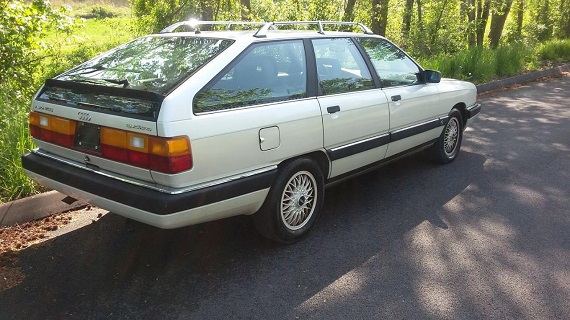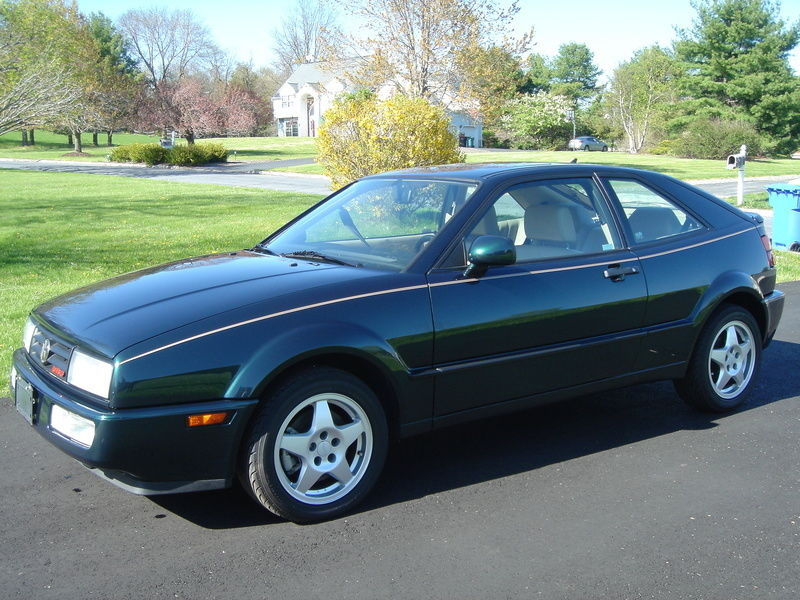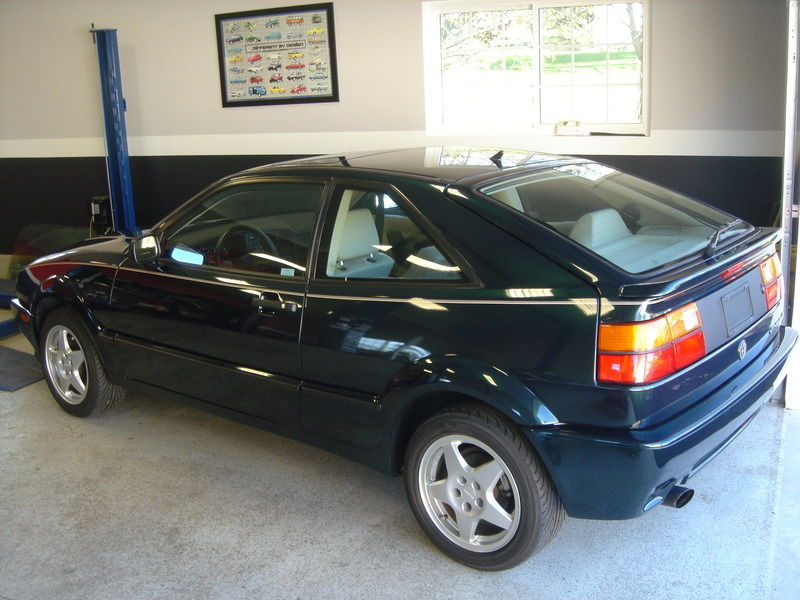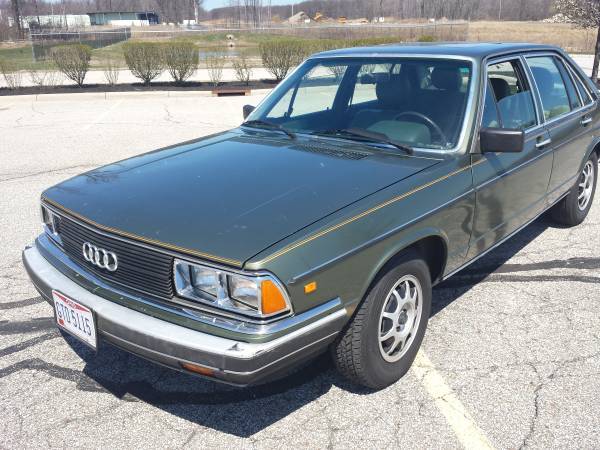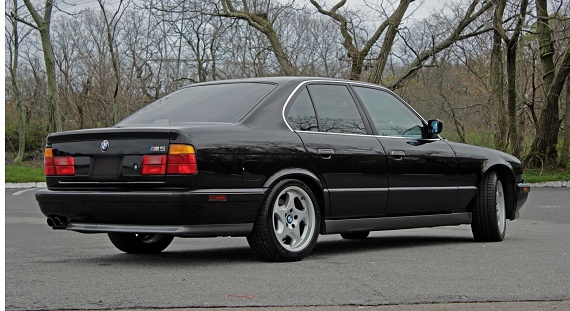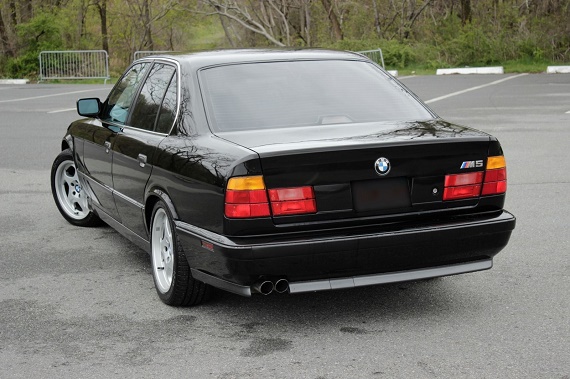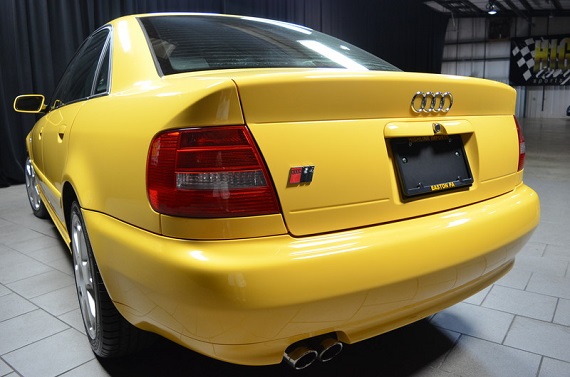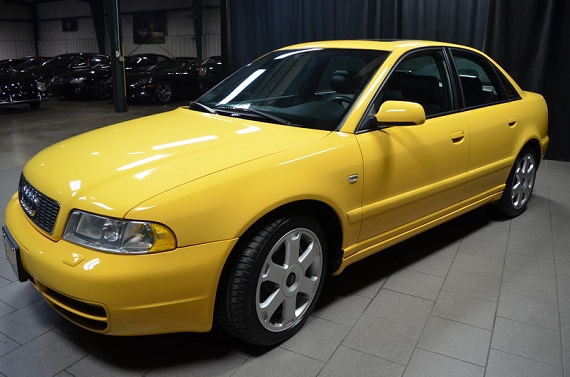Although the C3 Audi chassis enjoyed a reasonably long production run of 1984-1991, each year introduced changes that, while evolutionary, were notable and make each specific model year feel a little bit bespoke. The biggest change was the 1986 introduction of Audi’s all-wheel drive system of quattro to the large model range, making three distinct packages you could get the unique drivetrain in the luxury market. In the U.S. market, 1986 5000 quattros came only in “CS” spec and sedan – basically, fully loaded with only heated seats, Fuchs forged wheels and Pearlescent White Metallic paint as options. 1987 opened the options, but not with more gadgetry – the Avant, previously only available in front drive normally aspirated “S” form, joined the quattro lineup full time after being introduced about halfway through the 1986 model run. Alcantara also became a seldom-selected option. 1988 saw a very minor revision to the turbocharged “CS” models with new script badges in the rear and a few more options including heating for the rear seats and Velour interior options, but the big news was a new “5000S quattro” model, which came sans turbo and without the twin-bulb headlights, but shared the big brother turbo brakes and wheels. It was a smart move to drop the price on the quattro models, as the normal run 5000 reported outsold the 5000CS quattro by a measure of 4:1! 1989 was highlighted by a complete model refresh, moving to the European “100/200″ model designations. Accompanying the change were some new colors and minor alterations, such as more upscale-looking 15″x6” BBS wheels (color matched on Pearlescent White Metallic examples, just as the aero and Fuchs wheels had been). But inside an entirely new sweeping dashboard setup would be the standard on big Audis for the next 7 years. Instead of the previously confusing “S/CS” monikers, turbocharged models now wore the 200 badge, while normally aspirated models were 100s. The Alcantara and Velour options disappeared on the 200 models, which came only fully-loaded, and Fuchs were no longer an option. The 100 quattro shared many components with the 80/90 quattros from the same time, including the NG normally aspirated motor instead of the turbocharged MC1. 100s also ran the familiar small-chassis 4×108 bolt pattern with accompanying smaller brakes, but oldly Audi commissioned BBS to make a run of 15″x6″ wheels that matched the look of the 200’s wheels outwardly. Mechanically, otherwise there were few changes to either model, though as with the 80/90 quattros, the option to lock your own differential was now limited to the rear, and then speed limited to 15 m.p.h.. While 1990 saw few changes to the run overall, there was a change in motor in the 200. A rolling change saw the revised (and very short lived) MC2 replace the MC1. Twin knock sensors allowed engineers to run higher compression; coupled with a reground camshaft, lighter mass flywheel and smaller K24 turbo meant that the MC2 could run less boost and spool more quickly for a better driving experience, but ultimately the facts and figures say the power was unchanged. As always, top of the heap was the 200 quattro Avant, and they didn’t get any more expensive than when optioned with the Pearlescent White Metallic paint:
Author: Carter
Considering popular Volkswagen chassis for enthusiasts, it would be natural to equate the many generations of Volkswagen Golfs to BMW’s 3-series. Models like the legendary GTi 16V mimic the Munich brand in several ways, with high revving inline-4s, BBS wheels and the later models even sported quad round headlights. The models that followed plumped up a bit and went to sonorous 6-cylinders and even more recently turbocharging both has become the factory way. Following in that comparative logic, the Corrado SLC is more like the M5. It’s a bit more grown up, more refined – yet has an equal mystique and base of fans. For Volkswagen faithful, clean Corrados are like India was to the British Empire – the crown jewel of collectables. And no gems come to the market more brilliant than this basically new emerald-colored 1993:
CLICK FOR DETAILS: 1993 Volkswagen Corrado SLC on eBay
Comments closedIt is always a bit of a treat to look back at some alumni of the GCFSB pages, especially so when it’s a lovely example of a special car that was snapped up by one of our enthusiast readership. For years we’ve banged on about the E34 M5, a conundrum of the M lineup. It’s got all the right DNA to be a classic, yet like the similar 944 Turbo has generally languished in value compared to similar products. That may sound like a broken record on these pages, but it’s a tune which is both catchy and sweet-sounding for BMW fans because it means they’re getting more car for their money. Recent market activity in 2015 has started to remix the tune, though, and E34s have been on the rise. Hagerty currently places top value on 1991 M5s at $42,000 – steep sounding given what they’ve traded for over the last few years, but perhaps more in line with their legendary build quality and performance especially when considering their siblings. But in terms of overall value, let’s consider today’s Jet Black 1991. It is nearly 100% original, fully documented, accident free and has under 100,000 miles on the clock – and currently represents the best value of the original M-car experience:
CLICK FOR DETAILS: 1991 BMW M5 on eBay
5 CommentsFans, I have to apologize. I’ll happily admit that there are huge gaps in our daily lineup of cars. When I think of the numerous models that we skip over on a daily basis I genuinely feel a tinge of regret. First off, we really don’t feature much from before 1980 often, and even then it’s limited generally to the more expensive cars that survive such as Porsches or Mercedes-Benz models. Then there are plenty of obscure models we just overlook in our searches. I mean, when was the last time that we wrote up an Audi A3, for example? I’ll save you some time – nearly two years ago was the last time an A3 came across our pages. Or an Audi A2? I’m not sure one has ever popped up here, despite them being a very interesting and cutting-edge car. We rarely look at BMW Isettas or Mercedes-Benz SUVs – actually, come to think of it, pretty much any SUV despite their massive popularity and the reality that quite a few of them are nice trucks (and by trucks I mean cars). How about Porsche 914s, Karmann Ghias and pretty much any newer Volkswagen that isn’t a Passat wagon (sorry about that)? There simply isn’t enough time and space to cover all the models that are out there. As such, we often focus on the cars that interest us, and I’ll admit that since there are only a few writers here that means that we see a lot of the same things day in and day out. So, I’m sorry. But I promise, we do try to vary it up as much as we can!
In that vein, I want to look at a very nice Audi S4 today. The S4 itself is no stranger in any of its several generations on these pages, but often we either focus on the C4 generation or the B5, B6 and B7 Avants. The sedan gets scarcely any coverage here probably because the Avant is such a popular choice. But today’s sedan is pretty special, first because it’s one of the hot B5 colors of Imola Yellow, and second because it’s a low mileage, nearly perfect original model. Is it worth a high asking price?
